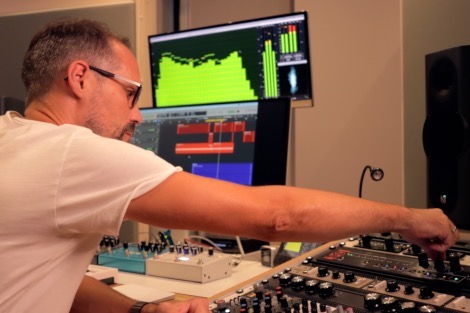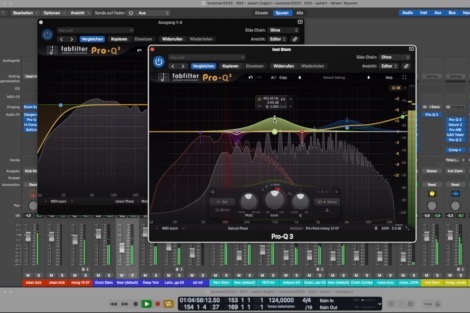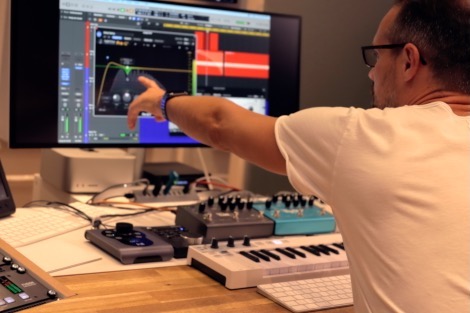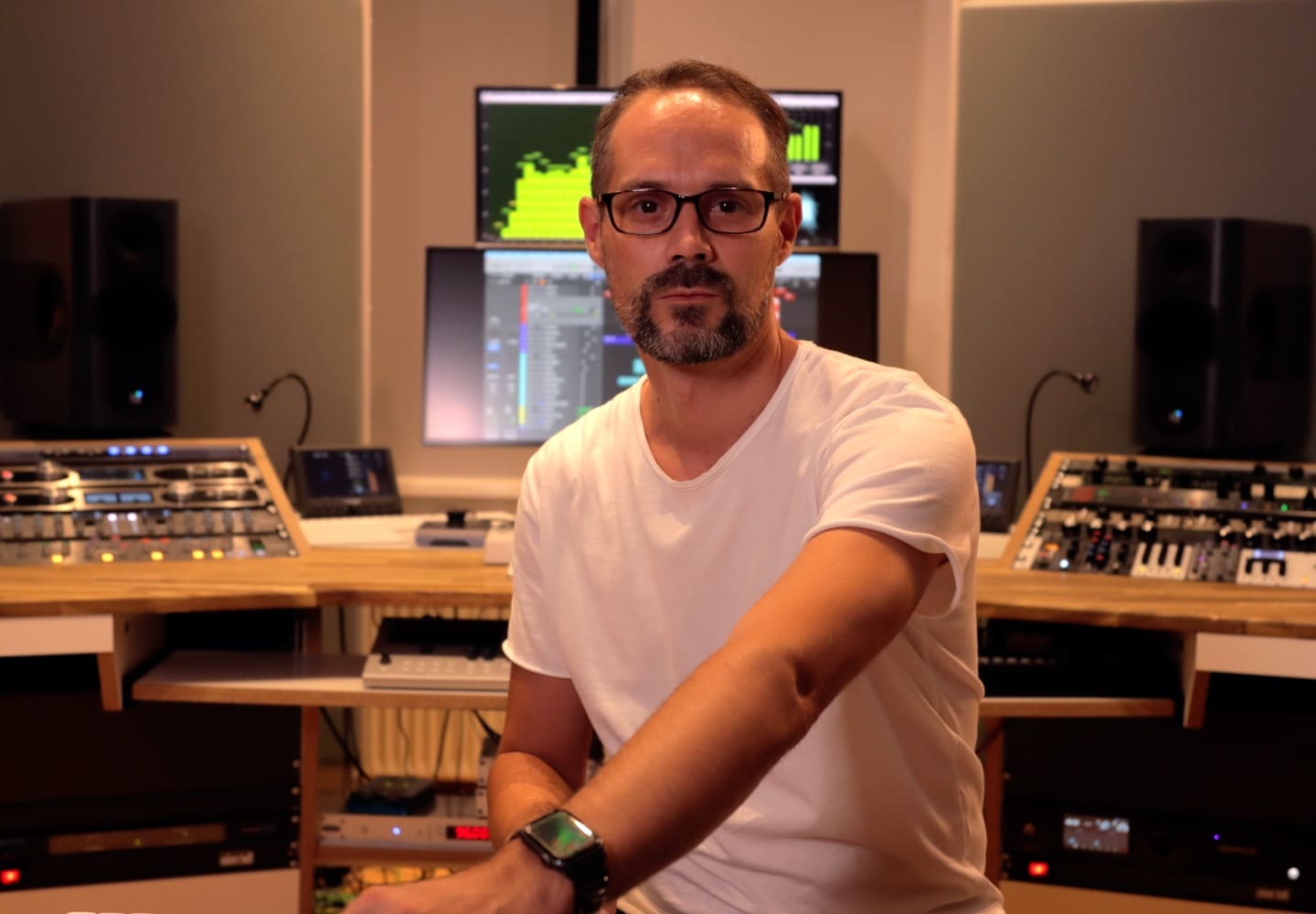
By continuing, you accept Aulart’s Privacy Policy.
Einmusik Masterclass
Digital Mixing for Club Sound
Discover how to create a powerful club sound in your music using Einmusik's tips and secrets for mixing in the box with your favorite DAW.
Dive into the art of professional mixing without investing in expensive analog gear.
Einmusik Masterclass

Arrangement and Mixing Techniques
Einmusik showcases his studio setup and provides insights on arrangement, clean leveling, and mixing tools.

EQing for Different Sounds
Einmusik highlights essential EQ techniques for powerful kick drums, pads, and chords, sharing strategies to meticulously EQ each layer.

Compression and Saturation
Einmusik delves into the details of compression, demonstrating the use of different compressors and highlighting the importance of using saturation to enhance sound quality.

Access a Free Chapter
Leave your email, and you’ll be granted access to select a free chapter of your choice.
By continuing, you accept Aulart’s Privacy Policy.
What will I learn?
In this chapter of the music production course, Einmusik takes viewers into his studio in Berlin to showcase a work in progress, an unfinished and unreleased song. He provides a quick overview of the arrangement and highlights the elements that are already present. Einmusik demonstrates his approach to mixing and the importance of clean leveling of all sounds. He shares insights on using tools like the Pro-Q3 equalizer to make necessary changes for the mixdown. Throughout the chapter, Einmusik emphasizes the importance of controlling frequencies and creating a balanced and impactful final product. This chapter offers valuable insights and skills for music producers looking to enhance their mixing techniques and create professional-quality music.

Einmusik shares valuable insights on mixdown and creating a premaster. He emphasizes the importance of checking and treating each layer separately to achieve a clean mix. Einmusik demonstrates his techniques using software music production tools like Logic’s stock plugins and Pro-Q. He also discusses the use of sidechain techniques and gluing compressors to enhance the relationship between different elements in a mix. Overall, this chapter provides valuable skills and techniques for music producers to improve their mixes.

In this chapter, Einmusik focuses on EQing for different sounds he emphasizes on the importance of using different EQs for different elements, such as kick drums, pads, and chords. Einmusik discusses the diverse capabilities of the Pro-Q EQ and recommends the Dangerous Baxandril EQ for kick drums. He also highlights the benefits of using dynamic EQs to control the level of a sound and stabilize the frequency spectrum. Einmusik encourages viewers to experiment with different EQs to achieve the desired results, while also cautioning against over EQing. Overall, this chapter provides valuable techniques and tools for music producers to enhance their mixing and mastering skills.

In this chapter, Einmusik focuses on the next step of preparing for mixing and pre-mastering. He delves into the details of compression, explaining the different types and their characteristics. Einmusik demonstrates how to use a compressor in Logic, emphasizing the importance of finding the sweet spot with the attack, release, and threshold settings. He also shares his go-to compressors for different instruments, such as the LA-2A for vocals and the 1176 for faster instruments. Einmusik highlights the importance of using compression sparingly and using other techniques like saturation and transient shaping to bring out the desired elements in a mix. He also touches on multiband compression and the use of a transient designer. Overall, this chapter provides valuable insights into the use of compression in music production and offers practical tips for achieving desired results.

Einmusik gets into the insights of mixdown and creating a premaster. He emphasizes the importance of using different types of saturation to achieve the best results in sound quality. Einmusik shares anecdotes from his own experience, including recording vocals through a studio console and the impact of preamps on sound richness. He demonstrates the use of various software plugins, such as a vintage Neve console EQ, to add saturation and shape the sound. Viewers can gain valuable skills in using saturation and understanding its impact on different instruments in their own music production journey.

In this last chapter, Einmusik shares his approach to achieving the right levels and volume on the master channel. He emphasizes the importance of balancing the different groups in the arrangement, particularly the kick and bass, which are crucial in dance music. Einmusik provides valuable insights on bringing the elements into the right relation to the kick drum and creating headroom for the mastering process. He also demonstrates techniques for EQing and compressing different stems and highlights the significance of keeping main sounds mono for punchiness and grip. Overall, this chapter offers practical tips and skills that can be applied to music production.

Einmusik
Berlin-based musician and label head Einmusik is considered to be one of the most acclaimed representatives of Melodic House & Techno, and deservedly so. With a musical cosmos that straddles some of the world’s most esteemed imprints such as Stil Vor Talent, Diynamic, Katermukke, Suara, and Bedrock among others, the German producer’s boundless creativity has resulted in a desire to produce under multiple monikers; his real name (Samuel Kindermann) in addition to pseudonyms Resil, Ophir Project and Seriously Tight.

Einmusik - Digital Mixing for Club Sound

- 6 Chapters
- Subtitles : English, Spanish, Italian, Portuguese, French & German
- 2h
- Audio: English
- 4K





Create Account
